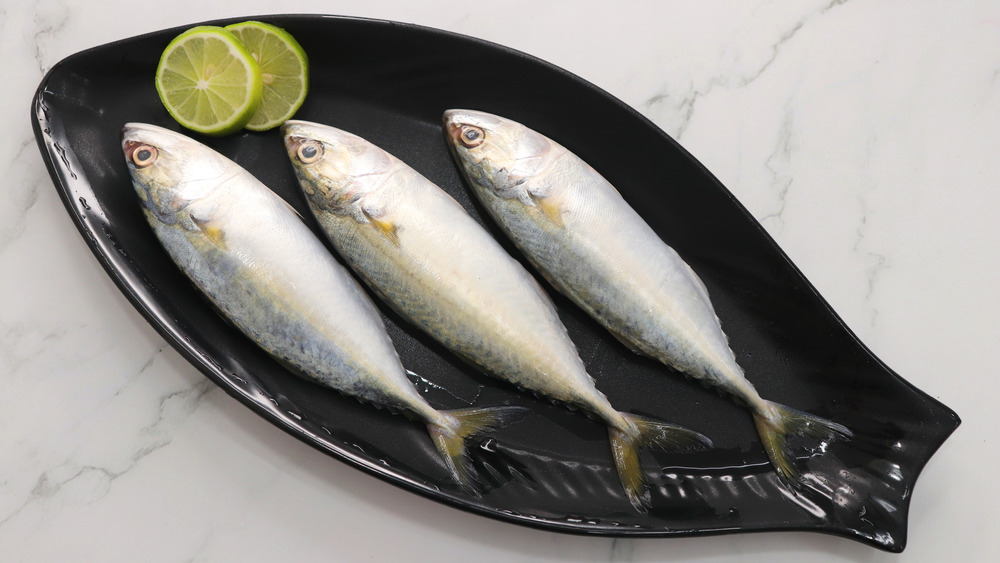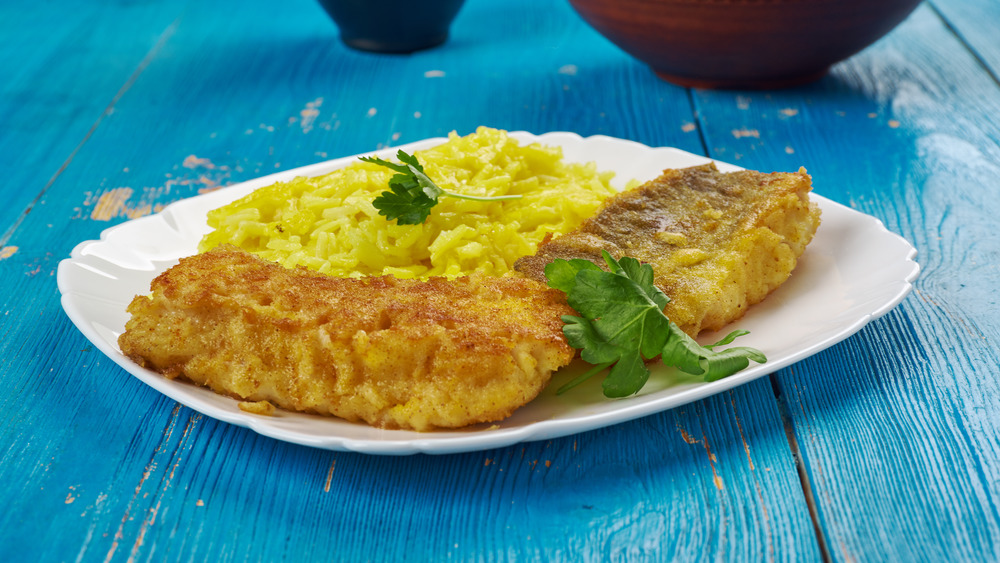Here's Why Fish Is Traditionally Eaten For Nowruz
If there's one thing that most New Year's celebrations have in common, it's traditional foods that are supposed to be eaten to bring some type of good luck, fortune, or blessings for the coming year. Here in the U.S., many people eat black-eyed peas on New Year's Day, while in Spain, people pop grapes at the stroke of midnight (via NPR), and in the Netherlands, the lucky Dutch get to breakfast on delicious oliebollen. A few weeks later, many Chinese families welcome in the Lunar New Year with dumplings, noodles, and a whole steamed fish, head and all (via China Highlights).
Fish also plays a major role in Nowruz celebrations. Nowruz is the Persian New Year celebrated on the first day of spring, not just in the former Persia (now Iran) but in many other countries throughout Central Asia and the Middle East, according to CNN Travel. While some of the special items prepared for Nowruz are strictly for symbolic purposes — the Haft Sin table is for decoration, not for dining — other foods are eaten out of tradition, and also because they just taste good.
Iran Front Page lists the main Nowruz foods as samanu, a sweet pudding made from sprouted wheat that also features on the Haft Sin table; kaak, a sweet pastry; reshteh polo, which are thin noodles mixed with rice; and the fish dish called sabzi polo ba mahi. The fish used here, unlike the one featured in Lunar New Year celebrations, is often fried and served with fresh rice and herbs.
Does sabzi polo ba mahi have any special meaning?
Several different stories purport to divulge the reasons why sabzi polo ba mahi is eaten to celebrate the new year. IFP says that some stories link the dish to the prophet Solomon, as there is a legend surrounding this holy man and a fish of enormous appetites (via Muftisays). Yet another origin story says that this fish dish dates back to the time of the ancient Persian ruler Jamshid, a man who just so happened to discover sugar on the first day of spring thousands of years ago. It is for this reason, according to food blog Arousing Appetites, that Nowruz celebrations always feature such a large assortment of sweets such as candies and pastries, although there doesn't seem to be any particular link between Jamshid and fish.
Yet another reason for sabzi polo ba mahi having been adopted as the official dish of Nowruz may have to do with a more generic type of symbolism — the fish represents new life and fertility (as do bunnies in Western culture), while the fresh herbs in the dish symbolize new growth and rebirth for obvious reasons. IFP points out, though, that there's no real evidence to support any of these theories. Rather, they say, sabzi polo ba mahi is eaten, because, well, because that's what you're supposed to eat, kind of like how we eat turkey on Thanksgiving. It's tradition, and that's a good enough reason on its own.

